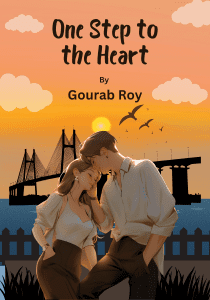John Keats, a central figure in the second generation of Romantic poets, is celebrated for his rich, sensual language and profound engagement with nature, emotion, and the human condition. Among his most admired works, “Ode to Autumn,” written in 1819, stands out as an elegant reflection on the fleeting yet beautiful transition of seasons, life, and time. In this article, we will delve deeply into the poem’s summary and analysis, discuss its thematic richness, and explore the subtle characterizations within the poem.
Summary of “Ode to Autumn”
“Ode to Autumn” is composed of three stanzas, each addressing a different aspect of the autumn season. The poem captures a vivid portrait of the season through its sights, sounds, and rhythms, imbuing autumn with a life of its own. It reflects Keats’ focus on the natural world as an essential subject for poetic contemplation, as well as his meditative tone toward the inevitable cycles of time.
First Stanza
The first stanza opens with a warm and inviting image of autumn as a season of abundance and ripening. Keats describes autumn as a time when the “mists” fill the air, and the sun cooperates with nature to ensure that the earth is filled with the fruits of the harvest. The “bosom-friend of the maturing sun,” autumn is personified as a gentle collaborator with the natural forces of growth, working to “fill all fruit with ripeness to the core.” The imagery here is luxuriant, with references to “vines,” “apples,” and “gourds,” emphasizing the completeness of the harvest. Keats revels in the fullness of life and the richness of nature, showing autumn as a season of fulfillment.
Second Stanza
The second stanza shifts to a more personified representation of autumn. Here, Keats depicts autumn as a reaper, a figure actively involved in the tasks of the season. Autumn is seen sitting on the “granary floor,” resting from the labor of harvest. She is also imagined “on a half-reap’d furrow sound asleep,” symbolizing a moment of pause, a languid resting amidst the business of gathering. This depiction imbues autumn with a human quality, one that is not only fruitful but also capable of weariness. The stanza emphasizes the physical, tangible aspects of the season, with imagery of labor, rest, and the steady hum of nature’s work.
Third Stanza
The final stanza meditates on the sounds of autumn and the passage of time. Keats reflects on the beauty of autumn’s song, which differs from the vibrant music of spring. The sounds of autumn are more subdued, yet they carry their own charm. The “wailful choir of small gnats,” the “lambs loud bleat,” and the “gathering swallows” signal the end of the year and the coming of winter. The tone here is more melancholic, as Keats contemplates the inevitable decay that comes with the turning of the seasons. However, he finds beauty even in this decay, accepting the impermanence of life as a natural part of its cycle.
Analysis of “Ode to Autumn”
“Ode to Autumn” exemplifies Keats’ mastery of the ode form, as well as his philosophical engagement with nature, time, and mortality. The poem is written in iambic pentameter, with a regular rhyme scheme that mirrors the harmonious flow of nature. Yet, beneath this formal structure lies a complex meditation on the passage of time and the transient nature of beauty.
The Lush Imagery of Abundance
One of the most striking aspects of “Ode to Autumn” is its lush, sensory imagery. Keats’ description of autumn as a time of ripeness and fulfillment creates a vivid picture of a world in balance. The imagery in the first stanza, in particular, is almost overwhelming in its richness, with references to “mossed cottage-trees,” “plump hazel shells,” and “flowers for the bees.” This luxuriant description reflects Keats’ fascination with the sensory world and his ability to evoke a sense of abundance and plenty.
Personification of Autumn
Throughout the poem, Keats personifies autumn, first as a companion of the sun and then as a figure engaged in the labor of harvest. This personification gives the season an active role in the natural world, transforming it from a mere backdrop into a character in its own right. In the second stanza, autumn is imagined resting after its work, a figure of both productivity and weariness. This duality of activity and rest reflects the natural rhythms of life, where periods of growth are followed by moments of stillness.
The Cyclical Nature of Time
Underlying the poem is a deep awareness of the cyclical nature of time. Keats’ portrayal of autumn as a season of ripeness and decay mirrors the human experience of aging and mortality. The shift from the fullness of the harvest to the sounds of dying insects and the gathering of swallows highlights the inevitable passage of time. Yet, rather than lamenting the loss of youth or beauty, Keats embraces this transience as a natural and necessary part of life.
Themes in “Ode to Autumn”
“Ode to Autumn” is rich in thematic content, exploring a range of ideas related to nature, time, and the human condition.
1. The Beauty of Transience
At its core, “Ode to Autumn” is a meditation on the beauty of transience. The poem captures the fleeting nature of life, where moments of abundance and ripeness are followed by decay and death. Yet, rather than viewing this transience as something to be feared or mourned, Keats finds beauty in it. The final stanza’s focus on the quiet sounds of autumn reflects an acceptance of the natural cycle of life, where even decay has its place in the larger order of things.
2. The Interconnectedness of Nature
Another key theme in the poem is the interconnectedness of nature. Keats portrays autumn not as an isolated event but as part of a larger system of life, where each element—sun, fruit, flower, insect—plays a role in maintaining balance. The imagery of ripening fruit and busy bees suggests a world in which all living things are in harmony with one another, working together to bring about the fullness of the season. This theme reflects the Romantic ideal of nature as a living, interconnected whole, where human beings, too, have their place.
3. The Passage of Time
Time is a central theme in “Ode to Autumn,” reflected in the poem’s structure as well as its content. The progression from the lushness of the first stanza to the melancholy of the third mirrors the passage of time from youth to old age. Keats’ focus on the “soft-dying day” and the “wailful choir” of gnats suggests an awareness of the inevitability of death, yet this awareness is tempered by an acceptance of the natural cycle of life. Rather than resisting the passage of time, Keats embraces it, finding peace in the knowledge that each season has its own beauty.
4. The Relationship Between Humanity and Nature
While “Ode to Autumn” does not directly address human beings, it nonetheless explores the relationship between humanity and nature. By personifying autumn, Keats blurs the boundary between the human and the natural, suggesting that we, too, are part of the cycle of life. The figure of autumn as a reaper, resting after her labor, can be seen as a metaphor for human life, where periods of activity and rest are natural and necessary. In this way, the poem suggests that human beings, like the natural world, are subject to the rhythms of time and change.
Characterization in “Ode to Autumn”
Though “Ode to Autumn” does not have traditional characters, Keats’ personification of autumn gives the season a distinct personality. In the first stanza, autumn is depicted as a friend and collaborator of the sun, working together to bring about the ripening of fruit and the fullness of the harvest. This characterization suggests a figure of warmth and abundance, someone who nurtures and supports the natural world.
In the second stanza, autumn takes on a more human quality, depicted as a reaper who pauses to rest after her labor. This image of autumn as a weary worker reflects the physical toll of the season’s work, as well as the inevitable slowing down that comes with the passage of time. The figure of autumn here is both productive and vulnerable, embodying the balance between activity and rest that characterizes the natural world.
Finally, in the third stanza, autumn is associated with the sounds of decline and decay. The “wailful choir” of gnats and the gathering swallows suggest a sense of melancholy, as autumn prepares to give way to winter. Yet, even in this moment of decline, there is a quiet beauty, as Keats finds music in the dying sounds of the season. In this way, autumn is characterized as both a figure of life and death, embodying the cycle of growth and decay that defines the natural world.
Conclusion
“Ode to Autumn” is one of John Keats’ most celebrated works, and for good reason. Its rich, sensory imagery and profound meditation on the cycles of nature make it a timeless reflection on the beauty of transience and the passage of time. Through his personification of autumn, Keats gives the season a life of its own, transforming it into a figure of warmth, productivity, and rest. The poem’s themes of interconnectedness, the passage of time, and the relationship between humanity and nature continue to resonate today, reminding us of the beauty to be found in the cycles of life and death.
Keats’ “Ode to Autumn” is not merely a celebration of a season; it is a philosophical reflection on the human condition, one that encourages us to find peace and beauty in the fleeting moments of our lives. By embracing the inevitability of change and the natural rhythms of time, Keats shows us that even in the face of decay, there is a quiet grace to be found in the turning of the seasons.



